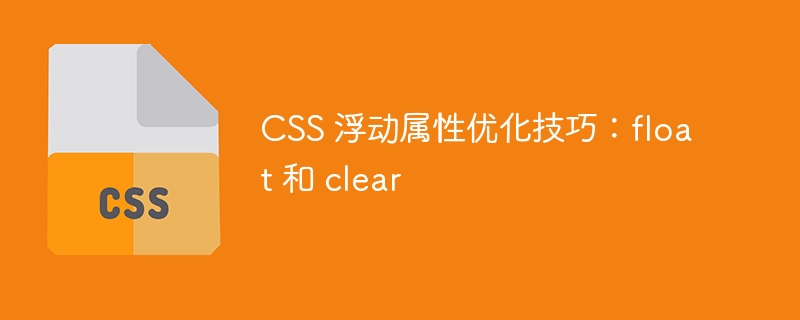Home > Article > Web Front-end > CSS floating property optimization tips: float and clear

CSS floating attribute optimization skills: float and clear
Introduction:
In web page layout, we often use the floating attribute (float) in CSS To achieve positioning and arrangement of elements. However, floating attributes can also cause some unexpected problems in some cases, such as overlapping elements, broken layout, etc. In order to better master floating properties, this article will introduce the optimization techniques of floating properties in CSS and provide specific code examples.
1. Basic usage of float attribute
The float attribute is used to specify that an element floats to the left or right of its parent element to achieve the arrangement effect of elements. The basic syntax is:
.float-demo {
float: left; / or right /
}
2. Common problems and optimization techniques of float attributes
The following are optimization tips based on the above issues and provide specific code examples:
Optimization Tip 1: Solve the element overlapping problem
.float-demo {
float : left;
}
.clearfix::after {
content: "";
display: table;
clear: both;
}
Optimization Tip 2: Solution The parent element cannot adapt to the height problem
.float-demo {
float: left;
}
.clearfix::after {
content: "";
display : table;
clear: both;
}
Optimization Tip Three: Solve the problem of overlapping elements that trigger external interference
.float-demo {
float: left;
}
.clearfloat::before {
content: "";
display: table;
}
.clearfloat::after {
content: "";
display: table;
clear: both;
}
Conclusion:
Through the above optimization techniques, we can better master the use of floating attributes in CSS. By rationally using float and clear attributes, we can avoid some common problems and improve the layout effect and user experience of web pages.
Finally, it is worth noting that the use of floating attributes should also be combined with specific layout requirements. Sometimes other layout methods need to be used to achieve better results.
The above is the detailed content of CSS floating property optimization tips: float and clear. For more information, please follow other related articles on the PHP Chinese website!